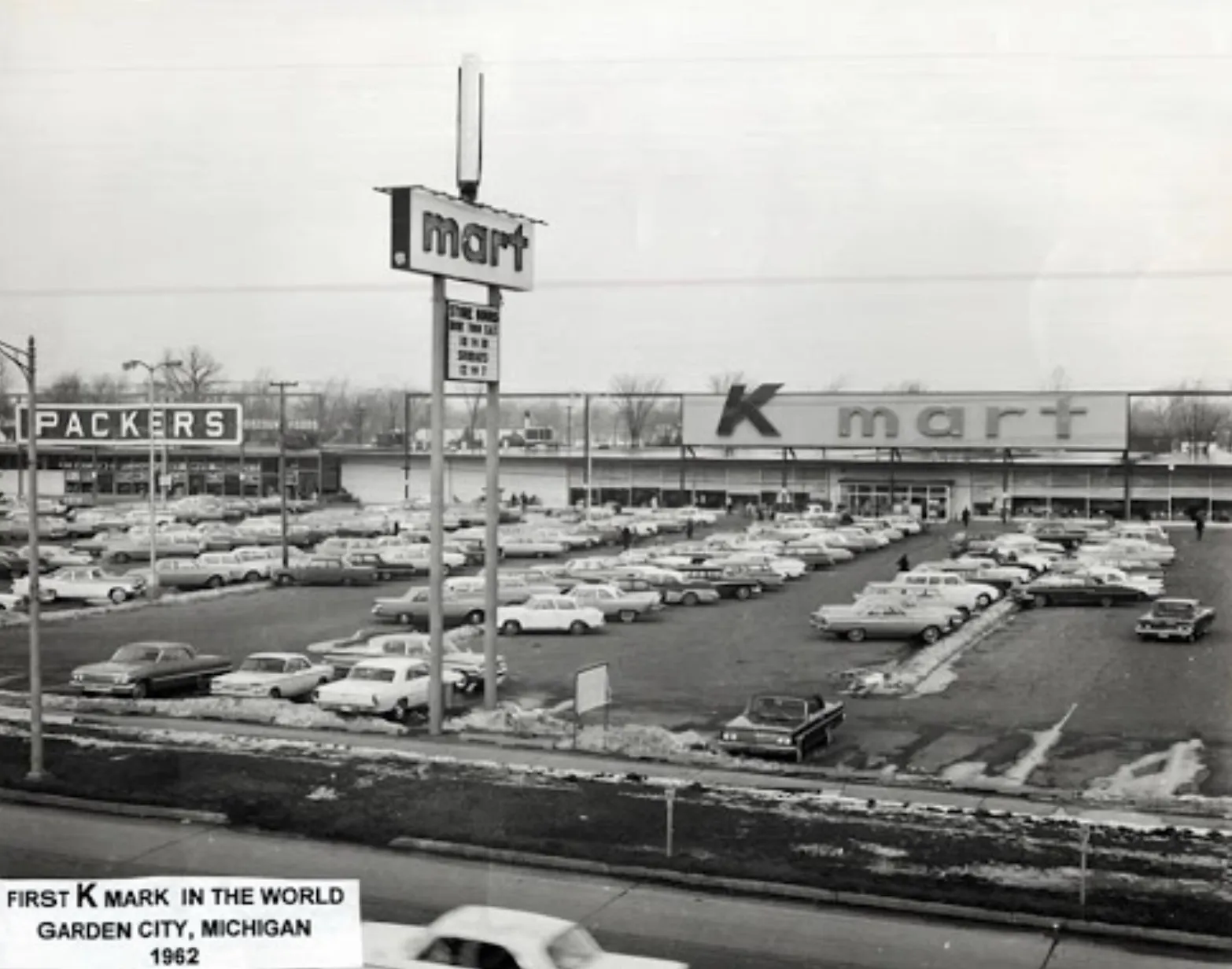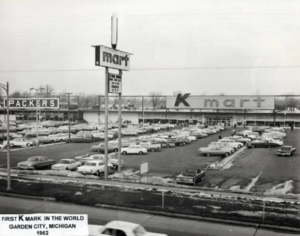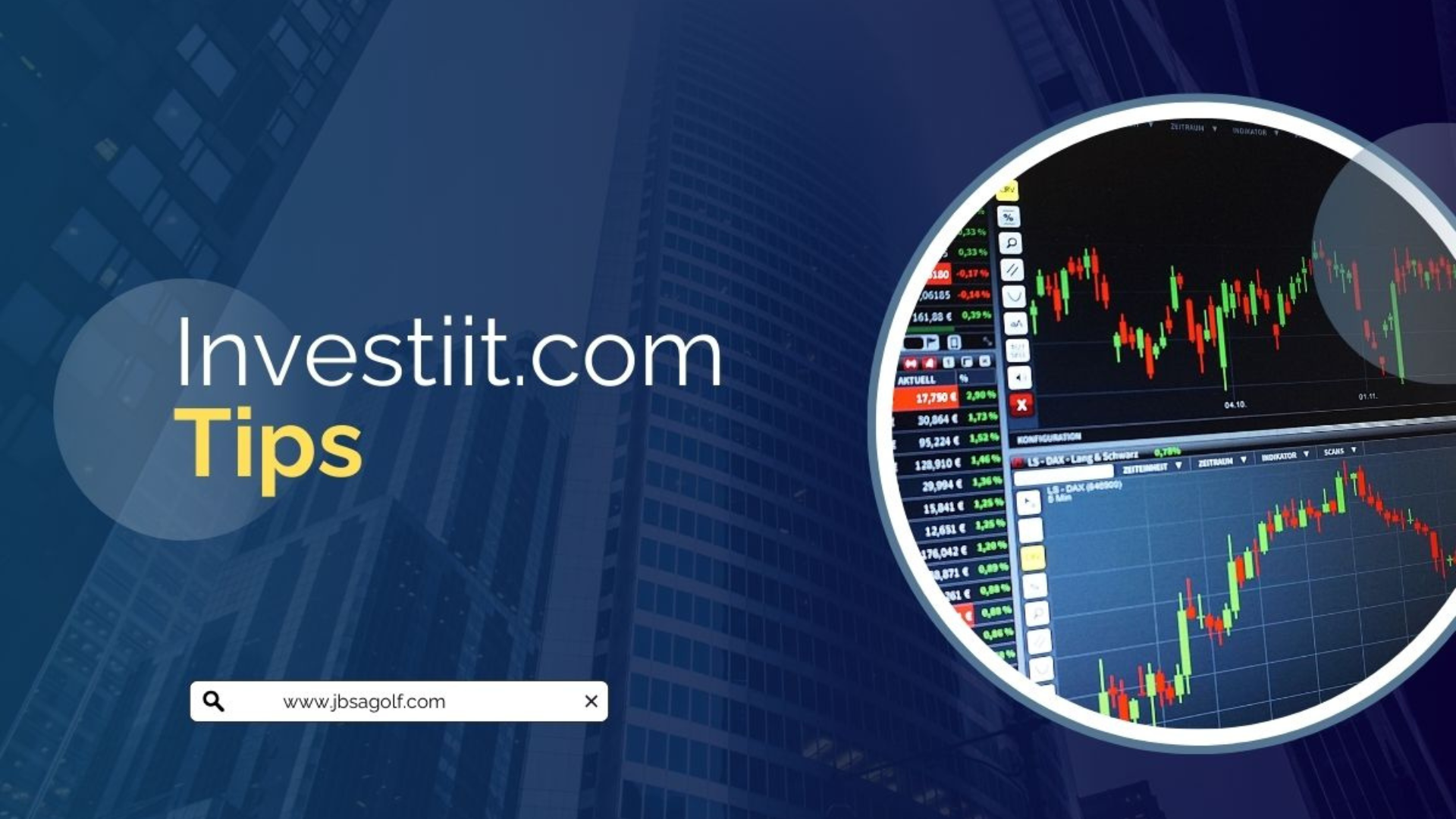BUSINESS
What happened to Kmart?

Once upon a time, the world of big-store retail was dominated by Kmart — not Walmart or Target or Amazon. That dominance is over, though, and Kmart is on its last legs.
What happened? How did the company have such a massive fall from grace? That’s what we’re going to explore today. This is the history of Kmart — from its beginning to its peak to its near collapse.
Humble beginnings
Everyone’s gotta start somewhere. For Kmart, it was in the deep Midwest of Detroit, Michigan. Only it wasn’t named Kmart at first. Instead, it was dubbed the S.S. Kresge Company — an absolute mouthful of a name. That name came from its original founder Sebastian S. Kresge, who opened up shop in 1899.
At first, the store was a discount one. Back in the 19th century, these were called five-and-dime stores because items usually cost around that five-cent to ten-cent mark. Because of inflation, these are what we call dollar stores today.
The Detroit store succeeded, which naturally meant expansion. By 1912, the store had 85 locations across the United States.
However, the Kmart you know and remember didn’t really come to fruition until 1962. That’s when the first-ever Kmart store opened in Garden City, Michigan. As you can guess, the K in the name represents the original founder, Kresge, who died only four years after this new start began.

The first-ever Kmart branded store opened in 1962 in Michigan. From the jump, the big K was used heavily in the branding.
Photo courtesy of Cincinnati Inquirer
Once the name changed, the Kmart franchise saw an explosion in popularity the rest of that decade and into the ‘70s. It became one of, if not, the leading discount retailers stateside. By this time, the five-and-dine concept was outdated. But Kmart still was about discounted items at its core and infiltrated every corner of the US — from the lucrative California market to middle-of-nowhere Nebraska.
History of Bankruptcies
At this point, Kmart and bankruptcies go hand in hand. It’s happened on several different occasions, and the fact that Kmart is still standing after them is a small miracle in itself.
Kmart was riding high going into the ‘80s but the competition also stiffened. Most notably, Target and Walmart came for Kmart’s neck with similar discount pricing. Once Kmart lost its status as the cheapest place to buy so-and-so household items, it’s market differentiator was gone.
From this point on, Kmart became a hot-potato type of brand. In 1984, it was acquired by retail holding company, American Fare Inc. They took out significant debt to make the deal happen, which ended up hurting Kmart and the holding company at-large. These financial constraints led to Kmart filing for its first Chapter 11 bankruptcy in 1990.
This is the first time that Kmart dodged permanent closing. It never reached its previous business peak as competition intensified, but it stayed afloat thanks to restructuring and constant management changes.
Business continued to ebb and flow into the ‘90s before they went bankrupt once more in 2002, once again via Chapter 11. Though for a second time, it managed to stay alive.
In fact, the now-Kmart Holdings Company tried to expand to salvage the business. During the mid-00s, it acquired the Sears brand — which was the number-one retailer in the pre-Kmart days.
However, both Kmart and Sears continued to hemorrhage money in the ensuing years. Each brand was representative of a time bygone. This was also the time when e-commerce and Amazon became a thing — which caught the Kmart Holdings Company flat-footed again. The organization never quite figured out the Internet, which proved to be its death sentence.
In 2018, bankruptcy came falling again — this time for good. When it reported for Chapter 11 bankruptcy, numerous stores up and down the United States began closing up shop. This piled up until Kmart was left as a skeleton of its former self.
Last Kmart Stores
In 2022, Kmart closed down its store in Avenel, New Jersey — just 15 miles south of New York City. With that, the franchise is left with three stores still standing. Only three — a far cry from the 2,300 or so it had in the ‘90s.
The last standing stores are as follows:
- Westwood, New Jersey
- Bridgehampton on New York’s Long Island
- Miami, Florida
There’s a few other stores worldwide, but these are the last holdouts on the continental United States. And honestly, all three are in danger of permanently closing themselves. We could be a few short years away from Kmart being gone for good.
Lessons From Kmart’s Demise
This is more than just a nostalgia piece on the once almighty brand known as Kmart. No, we want it to be a case study on where and why Kmart went wrong. That’s why we wanted to close out this article with business lessons from Kmart’s collapse. Here’s what future retailers can learn from Kmart.
The first is the importance of adaptability. Society will change. Technology will change. Consumers will change. It’s on individual businesses to monitor these changes and adapt accordingly.
Kmart failed to do that — most notably with the Internet. Not being able to predict consumers would turn to Internet buying is almost laughable in hindsight. Kmart was sagging when the Internet came to be, but if they would’ve pivoted and rode the new trend, they could’ve easily revived themselves. Alas, it was not to be.
Lesson number two is on differentiation. If you’re successful, competitors will copy you and what makes you different. For Kmart, that was steep discounted prices. Businesses have to be prepared for these types of events, and find a way to differentiate themselves some more.
Kmart did not do that. If anything, their competitors became better discounters, which stole their reputation for low prices right underneath their noses. Kmart had nothing else to fall back on (e.g. top-notch customer service or unique product offering), which made them forgettable for consumers. Forget long enough and you end up with only three stores left as Kmart currently sits.
BUSINESS
What Is Spread And How To Avoid Paying When Trading Currencies Online?

Every financial trader knows that spreads are their cost of doing business. Spreads are paid when a trader opens and closes a trading position. Simply put, the spread is the difference between the bid and ask price. The spread is the cornerstone of financial trading, especially when speculating on currency markets. High spreads can lead to reduced profit potential, while low spreads mean more profits for a trader. High volatility in the markets causes spreads to widen, meaning traders have to pay more to trade the markets. Let’s explain what spread actually is in forex trading and how to avoid paying excessive spreads.
Understanding Forex Spreads
Spread is the difference between the bid (buy) and ask (sell) prices quoted by a broker. Brokers act as intermediaries between exchanges and traders, and they provide traders with platforms. Every currency pair is given with two prices one for buy and one for sell. The difference between the two is what’s called a spread.
The spread is an absolutely critical part of trading, especially for day traders. Traders who employ strategies that capitalize on short-term price movements should opt for a zero spread FX trading account. The same is true for scalpers who are known for speculating on 1-minute and 5-minute timeframes. Spread is usually given by the broker on their website, which might slightly differ from real market spreads.
How spreads are quoted
Spreads are measured in pips or points for more precision, but the most common is pips. 1 pip is the fourth decimal change in price. For example, the EUR/USD pair was 1.1010 and rose to 1.1011, then the spread is 1 pip (1.1011 – 1.1010), or 10 points. Knowing this detail is crucial, especially when using MetaTrader 4 & 5 platforms, which measure pips movements in points, and traders have to divide the points by 10 to receive pips movement.
Fixed versus floating spreads
All brokers have spreads, meaning there is always a difference between bid and ask prices. However, some brokers might offer zero spread accounts, where traders get 0 pip spreads but have to pay commissions. These commissions should not be more than 7 USD per lot round turn or 3.5 USD per side. Spreads are paid twice, when opening and then when closing the position. This is why low spreads matter in trading and can actually define whether the trader is a winner or loser.
There are two types of spreads offered by brokers: fixed and floating. Floating spreads change and are dependent on market conditions. When there is high activity and volatility, extreme spreads tend to widen, while when markets are stable, spreads are low.
Fixed spreads are always fixed, meaning the difference between bid and ask prices are always the same. This is very useful when a trader wants to trade during high volatility or news releases. Fixed spreads tend to be generally higher than floating spreads, but when volatility gets extreme, fixed spreads are usually much lower than floating spreads.
Role of liquidity providers
Brokers enable traders to access markets, but they often get their pricing data from liquidity providers such as transnational banks and large market makers. Liquidity providers set the interbank rates and influence spreads. Brokers often add their markup on top of the spreads offered by liquidity providers. However, for standard accounts, average spreads should be around 1 pip. If it’s high, then it is expensive, and if it is low, it is more favorable.
Spreads are hidden costs of trading that can tremendously impact the result and, if underestimated, make even profitable strategies lose money.
Factors that affect spreads
The number one factor that affects spreads is market volatility. Major FX pairs like EUR/USD, GBP/USD, and so on have tighter spreads because they are very liquid.
Recent stock market crashes have increased overall market volatility worldwide, causing brokers to widen spreads to counter risks. Higher spreads mean more hidden costs for traders. During extreme uncertainty, when markets get volatile and price swings are extremely fast, spreads tend to get extremely wide, sometimes reaching tens of pips, making it nearly impossible to make money in such scenarios.
Trading hours also play a crucial role in spreads. Markets are more liquid when more participants are exchanging assets. During the London and New York session overlap, the liquidity peaks, and spreads tend to be competitive. Some brokers charge commissions besides spreads, and traders should be careful when selecting reliable brokers.
How to avoid paying high spreads
Traders should conduct Cresearch and compare spreads between different reputable brokers and select the one offering more suitable spreads. Traders who need the lowest spreads should select zero spread accounts (ECN), while traders using medium-term strategies should opt for standard accounts. Zero spread accounts typically charge commissions, which is important to keep in mind.
To ensure low spreads, traders should avoid major impact news. This is especially important for beginners who are just starting to trade the markets. Major pairs tend to have the lowest spreads, and beginners should also focus on major pairs. Spread calculators will help to calculate exact spreads, which is useful for timing entries.
BUSINESS
investiit.com Tips : Smarter Investing & Long-Term Wealth Growth

In an era where financial literacy and digital investment tools go hand in hand, investiit.com tips provide a comprehensive roadmap for navigating today’s dynamic financial markets. Whether you’re a beginner or a seasoned investor, these insights can help you refine your strategy, avoid common pitfalls, and grow your portfolio effectively.
Investiit.com serves as a trusted platform offering expert-curated guidance tailored to modern investors’ needs. Their practical tips help users optimize investments in stocks, crypto, real estate, and other financial instruments.
Getting Started with investiit.com
Before diving into specific investment advice, it’s crucial to understand what makes investiit.com a reliable source. The platform offers:
Real-time investment analysis
Personalized portfolio recommendations
Risk management tools
Learning resources for all experience levels
Whether you’re managing your own portfolio or planning to start one, using these resources smartly can set a solid foundation.
Creating a Diversified Portfolio
One of the most consistent pieces of advice from investiit.com is the importance of portfolio diversification. Investing all your capital in a single asset or sector is risky. Here’s how you can build a more resilient investment strategy:
Spread Across Asset Classes: Mix stocks, bonds, real estate, and crypto.
Geographic Diversification: Include both domestic and international assets.
Risk Balance: Allocate capital between high-risk and low-risk instruments based on your risk tolerance.
Diversification reduces the impact of poor performance from any one area and stabilizes your returns over time.
Leveraging Dollar-Cost Averaging (DCA)
Timing the market is notoriously difficult, even for professionals. Instead, investiit.com encourages the use of Dollar-Cost Averaging:
What is DCA? It’s an investment strategy where you invest a fixed amount regularly, regardless of market conditions.
Benefits: Reduces the risk of investing a large amount at the wrong time, and smooths out the purchase price over time.
This approach is particularly helpful in volatile markets, such as cryptocurrency or tech stocks.
Setting Realistic Investment Goals
One of the most overlooked tips from investiit.com is goal setting. Before investing, ask yourself:
What am I investing for?
What is my time horizon?
How much risk am I willing to take?
Whether your goal is to buy a home, save for retirement, or build passive income, having clear objectives helps you choose the right assets and strategies.
Automating Your Investments
Another powerful investiit.com tip is automation. Automating your investing process has multiple benefits:
Consistency: Ensures you invest regularly without emotional interference.
Time Saving: Reduces the need for constant monitoring.
Compounding Effect: Helps long-term investors grow their wealth efficiently.
Investiit.com integrates with brokerage platforms that allow automatic deposits and purchases, streamlining your investment flow.
Utilizing Risk Management Tools
Investing always involves some level of risk. The key is to manage that risk strategically. Here’s how investiit.com helps you do that:
Risk Assessment Quizzes: Understand your personal risk tolerance.
Stop-Loss Recommendations: Automatically sell assets that fall below a certain value.
Volatility Tracking: Identify and avoid overly volatile assets that don’t match your profile.
Using these tools can protect your capital and preserve gains.
Exploring Investment Types on investiit.com
The platform offers guidance on multiple investment categories. Each one carries different risk profiles and potential returns:
Stock Market
Blue-chip Stocks: Stable, long-term investments with regular dividends.
Growth Stocks: Companies with high growth potential but higher volatility.
Cryptocurrency
Popular Tokens: Bitcoin, Ethereum, and other established coins.
DeFi Projects: Decentralized finance protocols offering innovative yield opportunities.
Real Estate
REITs: Real Estate Investment Trusts that pay regular dividends.
Direct Property Investments: Physical property investments for rental income.
Bonds and Fixed Income
Government Bonds: Low-risk, predictable returns.
Corporate Bonds: Higher yields but increased risk.
Each category fits different financial goals and risk tolerances. Investiit.com helps you allocate accordingly.
Learning from Market Trends
A great investor is also a student of the market. Investiit.com provides real-time trend analysis, enabling investors to:
Spot emerging industries
Identify overheated sectors
Evaluate macroeconomic factors like inflation or interest rate changes
Understanding these trends helps you make data-informed decisions, reducing the chances of emotional or reactive investments.
Avoiding Common Investment Mistakes
Investors often lose money not due to bad markets, but poor decisions. Investiit.com emphasizes these mistakes to avoid:
Chasing Hype: Avoid investing in assets just because they’re trending.
Overtrading: Frequent buying/selling racks up fees and taxes.
Neglecting Research: Always do your own due diligence before investing.
Emotional Investing: Fear and greed are your worst enemies in the market.
With these insights, you can build a disciplined approach that stands the test of time.
Using investiit.com to Track Performance
Investing isn’t just about putting your money to work—it’s about knowing how well it’s working. Investiit.com provides intuitive dashboards to:
View portfolio performance over time
Compare your returns to benchmark indexes
Analyze your asset allocation in real-time
With data visualization tools, you gain clarity and confidence in your investment strategy.
Staying Updated with Financial News
Markets move fast. Staying updated is crucial. Investiit.com aggregates relevant news in categories such as:
Market updates
Regulatory changes
Company earnings reports
Global economic shifts
You can customize your news feed based on the assets you’re invested in, ensuring that you’re always ahead of the curve.
Building a Long-Term Mindset
Investing is a marathon, not a sprint. Investiit.com encourages a long-term focus by:
Promoting compound growth through reinvestment
Teaching patience and resilience during downturns
Sharing success stories of investors who stayed the course
A long-term mindset not only protects you from panic-selling but also helps maximize returns over decades.
Community Insights and User Forums
Sometimes the best tips come from fellow investors. Investiit.com features active community forums where users can:
Share strategies
Ask questions
Review market predictions
Get feedback on portfolio allocations
This peer-to-peer engagement enhances learning and builds confidence.
Using Technical and Fundamental Analysis
Investiit.com helps users blend both styles of analysis:
Fundamental Analysis: Evaluating financials, revenue growth, and industry outlooks.
Technical Analysis: Reading charts, indicators like RSI or MACD, and volume trends.
Combining both techniques offers a fuller picture of when to buy, hold, or sell.
Mobile App Features for On-the-Go Investing
Modern investors need tools that move with them. The investiit.com mobile app allows you to:
Monitor markets in real time
Set up alerts for price changes
Execute trades quickly and securely
Access learning resources on demand
With secure logins and customizable notifications, staying in control has never been easier.investiit.com Tips
Integrating Tax Optimization Strategies
Taxes can eat into your profits if not managed well. investiit.com Tips provides smart tax planning features like:
Tax-loss harvesting suggestions
Capital gains tax calculator
Portfolio rebalancing for tax efficiency
These strategies are especially helpful toward the end of the fiscal year.
Investing for Retirement with investiit.com
For long-term financial planning, retirement is a major goal. Investiit.com offers:
Retirement calculators
IRA and 401(k) investment strategies
Risk-adjusted model portfolios based on age and income
These tools ensure your nest egg is protected and optimized over time.
Real User Testimonials
Here’s what actual users say about their experience:
“I’ve tripled my savings in two years by following investiit.com tips.” — Samantha R., California
“The risk assessment tool changed how I invest completely. I finally feel in control.” — Jake M., Texas
“Perfect for beginners. The tutorials and community support helped me a lot.” — Neha D., London
These testimonials reinforce the platform’s impact across different experience levels.
Conclusion
Investing doesn’t have to be overwhelming. With the right guidance, tools, and mindset, anyone can become a successful investor. The investiit.com tips shared throughout this article highlight actionable ways to take control of your finances, optimize your portfolio, and make smarter decisions that stand the test of time.
Whether you’re starting with $100 or $100,000, following these tips will help you minimize risks and maximize growth. Empower yourself with knowledge, and let investiit.com be your partner in financial success.
ALSO READ:ecrypto1.com Crypto Security: Protecting Your Digital Wealth
FAQs
What is investiit.com?
It’s a platform that provides investment tips, tools, and real-time analytics to help investors grow their wealth wisely.
Are investiit.com tips suitable for beginners?
Yes, the platform offers beginner-friendly tutorials, goal-setting tools, and portfolio suggestions for new investors.
Can I use investiit.com for crypto investments?
Absolutely. The platform provides insights into Bitcoin, Ethereum, and other digital assets, including DeFi strategies.
How does investiit.com help reduce risk?
Through tools like risk profiling, stop-loss recommendations, and diversification tips, users can better manage their investments.
Is investiit.com free to use?
It offers a freemium model. Many tips are accessible for free, while premium features like advanced analytics require a subscription.
BUSINESS
The Ultimate Guide to Financial Stability for Freelancers in the Creative Industry

Freelancing in the creative industry can be both rewarding and challenging. While it offers flexibility and the freedom to pursue your passion, it also requires a keen sense of financial management. Unlike traditional employment, freelancing lacks the safety net of a steady paycheck and employer-provided benefits, making financial stability a critical concern for many creative professionals.
This guide provides comprehensive strategies to help you achieve and maintain economic stability, ensuring a secure and prosperous freelancing career. IRS debt relief can provide essential support for those struggling with tax issues.
Understanding Your Income and Expenses
It is essential to know what your income is and what your expenditures are when laying the foundations of a financially secure future. Due to the nature of freelance work, your income will only sometimes be constant; therefore, you must keep a detailed record of every dollar earned. Conduct daily or weekly income checks using accounting software or Microsoft Excel to check for patterns in your expenses. This will enable you to predict future earnings and then plan your activities in line with those projections.
Examining expenses also helps differentiate between necessary and unnecessary expenses. These are things like rent and other bills, groceries, and transportation costs, while non-essential are things like eating out, going to the movies, and expensive gadgets, respectively. The next step is to allocate the money appropriately so that you can always have the necessities in your life, regardless of whether there is little money in your pocket.
Building an Emergency Fund
Stress and extra costs mean freelancers should always have an emergency fund as part of their financial safety nets. It helps to cover expenses when there are shortages of money or, when there are certain unpredictable disasters like the need for a machine to undergo repairs or when someone in the family has to go to the hospital. It is advisable to set aside between 3-6 months of living expenses in another accessible account that should not be used for other purposes. This fund will give you that comfort that when you are out there doing your work, you are not so worried about the next meal you will eat.
Setting Realistic Financial Goals
Money management is a critical aspect that must be cautiously approached to avoid unnecessary financial pitfalls. Personal financial management objectives may include saving for retirement, paying off a loan, or funding professional improvement. Try to turn all these goals into achievable goals or sub-goals and set deadlines for accomplishing them. It is also necessary to revise and reconsider them according to changes in financial status and career path.
Diversifying Your Income Streams
It is not wise for freelancers to depend on a single source of income to feed their families. Spreading your revenue across different sources may offer more protection and decrease the effect of losing, for instance, a big client. Consider the various options in your niche, including providing skill development sessions, selling downloadable products, and using your creations for a fee. Also, do freelance work or other jobs that you can find on the side that are relevant to your expertise.
Managing Taxes Efficiently
It is worth noting that taxes can be one of the most overwhelming experiences for freelancers. This is why one must fully comprehend the tax laws and develop the right strategies. It is wise to save a few bucks for the taxes as this will help you avoid big bills at the end of the year. You should engage the services of a tax consultant, especially when it comes to matters such as deductions and credits on tax.
Retirement Planning for Freelancers
One of the most significant areas that freelancers neglect is retirement planning since it plays a vital role in determining the financial stability of the freelance worker. Freelancers do not get retirement benefits since they do not work under employers or organizations. Hence, you have to go ahead and open your retirement accounts, such as an IRA or Solo 401(k). Provide to these accounts continually and use assets’ tax-advantaged increase to accumulate a sizable sum of money to use once you retire.
Investing in Your Business
Business investment is crucial for the growth and survival of the business, as it should constantly improve and expand. Budget for training, advertising, and quality equipment for the program to be effective in its delivery. Such investments can improve your skills, attract more clients, and improve the general quality of your projects. Let me reiterate that most money invested today will pay off when the business is established.
Maintaining a Healthy Work-Life Balance
Financial stability not only means a financially secure person but also a balance between work and life. It was established that burnout directly affects productivity, which in turn results in lower income. This means creating a separation between work and other spheres of life, proper time management and organizing the working day, and adequately caring for oneself. Having balance for the body, mind, and soul will increase your health and happiness and increase productivity and imagination.
Conclusion
This means that the question of becoming financially secure as a freelancer in the creative industry is about more than luck but planning, a disciplined and active approach to financial decision-making, and income-generating strategies, including retirement planning. When you know how much money is coming in and how much is going out when saving for an emergency, setting achievable goals and savings, and investing in your business, you can enjoy a comfortable freelancing job. Finances are not a one-time concept but rather a lifelong process.
Therefore, people should have low expectations. Continually assess your strategies and the related plans carefully to ensure they are in harmony with your career and the market. But, if you find the right way, it will help you achieve the freedom and feel the success you always wanted for a freelance creative professional.

 Cartoon1 year ago
Cartoon1 year agoUnlocking the Potential of Nekopoi.care: A Comprehensive Guide

 Game1 year ago
Game1 year agoExploring Aopickleballthietke.com: Your Ultimate Pickleball Destination

 BUSINESS1 year ago
BUSINESS1 year agoWhat Companies Are In The Consumer Services Field

 BUSINESS12 months ago
BUSINESS12 months agoUnraveling the Mystery of 405 Howard Street San Francisco charge on Credit Card

 HOME IMPROVEMENT1 year ago
HOME IMPROVEMENT1 year agoVtrahe vs. Other Platforms: Which One Reigns Supreme?

 TECHNOLOGY12 months ago
TECHNOLOGY12 months agoThe Guide to Using Anon Vault for Secure Data Storage

 ENTERTAINMENT8 months ago
ENTERTAINMENT8 months agoUnderstanding Bunkr Album: A Comprehensive Guide

 ENTERTAINMENT1 year ago
ENTERTAINMENT1 year agoThe Epic Return: Revenge of the Iron-Blooded Sword Hound
















